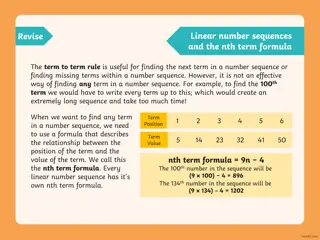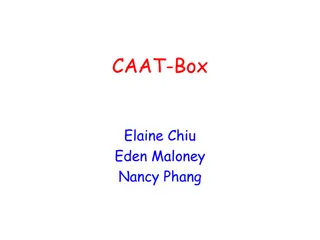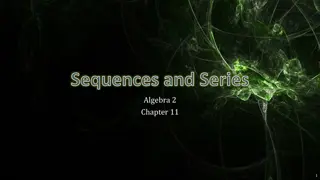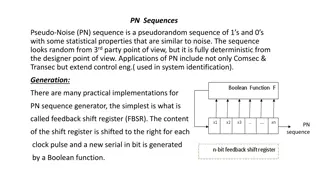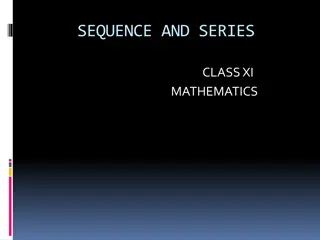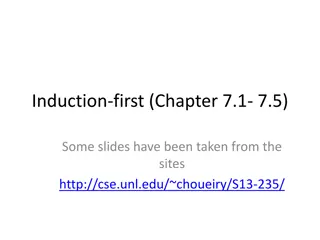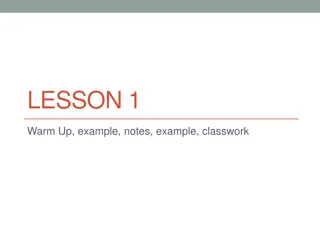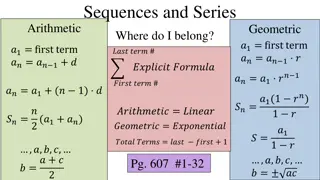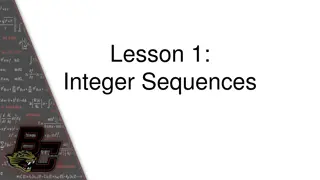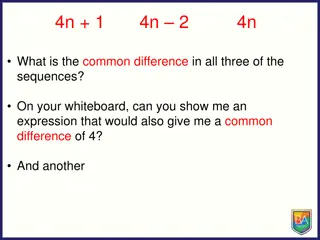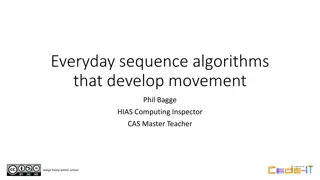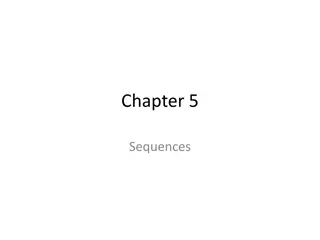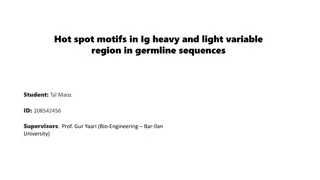Understanding Sequences and Series of Functions in Real Analysis
Real analysis delves into the study of real numbers, sequences, series, and functions, exploring properties such as convergence, limits, continuity, differentiability, and integrability. This field scrutinizes the behavior of real-valued functions and their convergence types, including pointwise and uniform convergence, with criteria like Cauchy's criterion. Theorems such as the Weierstrass M-test for uniform convergence offer valuable insights, and the relationship between uniform convergence and continuity provides a deeper understanding of mathematical concepts in a metric space.
Download Presentation

Please find below an Image/Link to download the presentation.
The content on the website is provided AS IS for your information and personal use only. It may not be sold, licensed, or shared on other websites without obtaining consent from the author. Download presentation by click this link. If you encounter any issues during the download, it is possible that the publisher has removed the file from their server.
E N D
Presentation Transcript
SEQUENCES AND SERIES OF FUNCTIONS Prof. Mini Thomas Department of Mathematics
CONTENT INTRODUCTION POINTWISE CONVERGENCE AND UNIFORM CONVERGENCE OF SEQUENCES OF FUNCTIONS CAUCHY S CRITERION FOR UNIFORM CONVERGENCE THEOREMS UNIFORM CONVERGENCE AND CONTINUITY DEFINITION CONCLUSION REFERENCES
INTRODUCTION In Mathematics , real analysis is the branch of mathematical analysis that studies the behavior of real numbers ,sequences and series of real numbers and real valued functions .Some particular properties of real valued sequences and functions that real analysis studies include convergence , limits , continuity , smoothness , differentiability and integrability .
POINTWISE CONVERGENCE AND UNIFORM CONVERGENCE OF SEQUENCES OF FUNCTIONS Definition ( Pointwise convergence ) Suppose {fn} be a sequence of functions defined on a set E and suppose that the sequence of numbers {fn } converges for every x E we can define a function f by f = limn fn , x E And we say that {fn} f pointwise on E or simply , {fn} converges on E and that f is the limit or the limit function of {fn}. Definition (Uniform convergence) A sequence of functions {fn} is said to converge uniformly on E to a function if for every 0 , their exist N such that n N implies fn f , for all x E
CAUCHY S CRITERION FOR UNIFORM CONVERGENCE THEOREM : The sequence of functions {fn} defined on E , converges uniformly on E iff for every 0 their exist an integer N such that m,n N , x E implies fn fm
THEOREMS THEOREM 1: Suppose limn fn = f , x E put Mn = x Esup fn f then fn f uniformly on E iff Mn 0 as n THEOREM 2 (WEIERSTRASS M-TEST FOR UNIFORM CONVERGENCE OF SERIES ) : Suppose {fn} is a sequence of functions defined on E and suppose fn Mn , for all x E and n= 1,2,3, then fnconverges uniformly on E if Mn converges
UNIFORM CONVERGENCE AND CONTINUITY THEOREM Suppose fn converges to f uniformly on a set E in a metric space . Let x be a limit point of E and suppose that limt xfn t = An ,n=1,2,3,. then {An} converges and limt xf t = limn An
THEOREM : If {fn} is a sequence of continuous functions on E and if fn converges to f uniformly on E then f is continuous on E THEOREM : suppose k is compact a) {fn} is a sequence of continuous functions on k b) {fn} converges pointwise to a continuous function f on k c) fn fn+1 , for every x k , n =1,2, then fn converges to f uniformly on k
DEFINITION Let X be a metric space then the set of all complex valued continues bounded functions with domain x is denoted by . If f is a continuous function on a compact metric space then f is bounded . So if x is compact consists of complex valued continuous functions on X . Let f then define f = x Xsup f , then is a norm on and is called supremum norm
CONCLUSION The difference between the uniform convergence and pointwise convergence is that if {fn} converges uniformly on E which is possible for each >0 to find one integer N which will do for all x E so in case of uniform convergence N depends only on and in case of pointwise convergence N depends on and x
REFERENCES WALTER RUDIN, Principles Mathematical analysis (Third edition) , McGraw Hill Book Company , International Editions. Chapter 7 Section 7.1- 7.18



